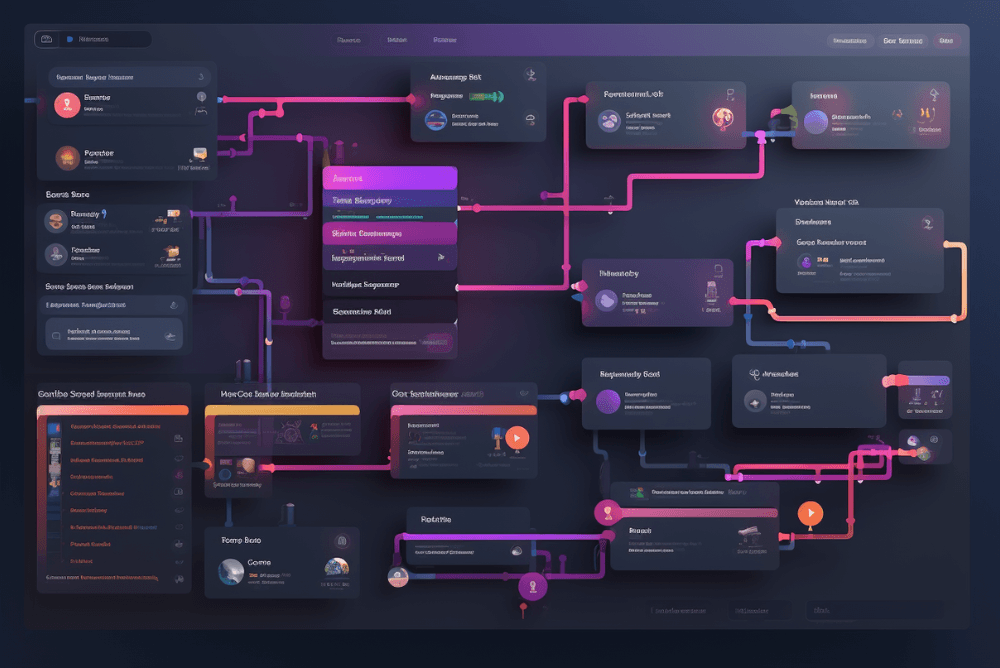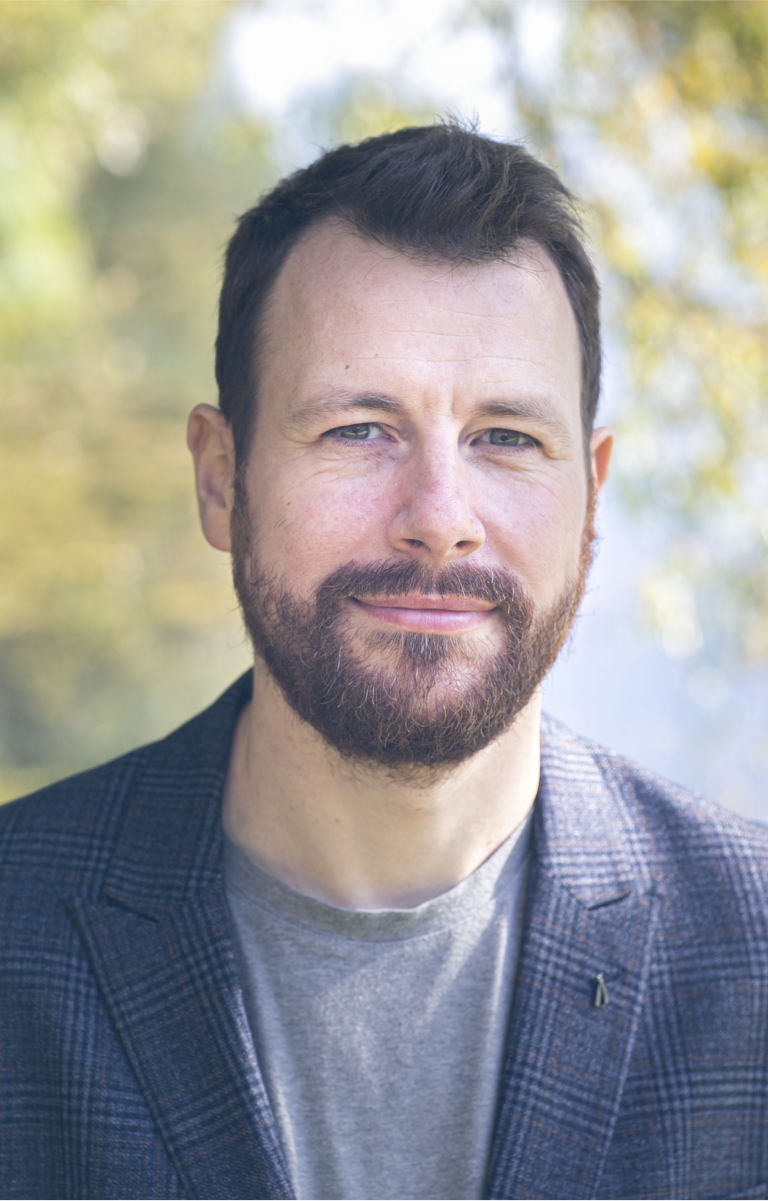6 non-obvious signals showing you might need UX consultancy
5 Sep 2024
We delve into six intimate challenges companies encounter when implementing or transforming work tools. These challenges often manifest as subtle, non-obvious signals that can be easily overlooked but may indicate a need for the specialized expertise of a UX consultant.
Optimizing tools and processes is a complex journey that often requires the expertise of a UX consultant. It involves careful analysis of the current state of affairs, open communication with stakeholders, and a willingness to reevaluate and adjust strategies. While many organizations have made significant strides in adopting new technologies, a substantial number still struggle to meet their goals, highlighting the need for specialized support.
According to a recent EY report on the state of digital transformation in Poland, a majority of companies are attempting to manage this transformation independently, relying solely on internal resources. However, despite these efforts, 60% of these companies report dissatisfaction with their progress, suggesting that the initial, more manageable phases of digital transformation have been completed, leaving the more intricate and challenging work ahead.
Structured and hidden problems
Our experience as UX consultants shows two distinct categories of challenges: we call them structured and hidden problems. Structured problems are straightforward, typically defined through a clear brief that outlines specific issues. Companies seek external assistance by issuing these briefs, leading to a standard process of offers, negotiations, and potential collaboration. This conventional approach is well-trodden and familiar within the industry.
In contrast, hidden problems are much less apparent and often remain obscured within an organization. Agencies may only glimpse these issues through informal conversations or fleeting mentions during meetings. This concealed knowledge poses a significant challenge, as it is not readily accessible or easily articulated. Moreover, companies often struggle to systematize these latent issues into formal briefs, making it challenging to identify suitable external partners to address them. Consequently, these problems are frequently managed in-house, which, while seemingly sufficient, can sometimes be to the company's detriment.
With this distinction in mind, we can delve into the core of our discussion—identifying the signals that indicate a company may need specialized support from UX consultants, even if it hasn't yet recognized this need.
Watch: 6 non-obvious signals showing you might need UX consultancy
Signal 1: "Something's wrong, and we don't know what"
A statement that frequently arises in the professional realm is, "We've implemented a tool, but something's wrong, and we don't know what." This phrase encapsulates a common yet frustrating situation: despite deploying new software or systems, companies find something is missing but cannot pinpoint the exact issue. This often stems from a lack of a unifying force within the organization—a catalyst that can gather scattered knowledge, quantify it, and translate it into a systematic brief, as mentioned earlier.
When hearing such statements, it becomes evident that the problem often lies beneath the surface, embedded in intuition, unverified assumptions, or fragmented information circulating within the company. The issue's root causes might be known to a few individuals or hinted at through informal channels, but there is no precise diagnosis. The challenge, therefore, is to uncover this hidden knowledge and transform it into actionable insights.
This knowledge discovery can happen in two basic ways: user research or data analysis, and this is when UX consultants become indispensable. By extracting and cataloging vital information, they bring the hidden knowledge to the surface and democratize data. They can employ all UX consultant tools and methods, but quantitative and qualitative research is crucial. This way, companies can uncover the underlying issues causing the tool's poor performance and recommend necessary changes to improve the situation.
Signal 2: “People complain about tools and systems”
Another signal indicating potential issues within a company is when employees frequently complain about the operation of IT systems. This situation often reflects a deeper problem with internal communication and coordination within the organization. Typically, the IT department becomes the primary recipient of these complaints. However, this can create persistent friction between IT and other departments, as IT is blamed for operational issues and is constantly pressured to fix them.
While proficient in technology, infrastructure, security, stability, databases, and servers, the IT department often lacks the expertise to work effectively with end-users. Moreover, there is often no organized platform or channel for systematically gathering and addressing user feedback. Instead, complaints and suggestions are scattered across emails, Slack channels, Jira tickets, and informal conversations. It makes compiling a coherent backlog for potential system improvements challenging, leading to competition among departments due to IT's limited time and resources.
We need to say though that these complaints often come with constructive feedback and ideas for system improvements. Users can offer valuable insights into making tools more efficient and user-friendly.
By creating structured channels for communication, a UX consultant can gather user needs, prioritize them, and present a well-organized list of change requests. In doing so, UX consultants identify critical issues and ensure that improvements are aligned with user expectations and business goals.
Signal 3: "We want to consolidate existing tools"
Another standard but often under-communicated signal is the need for tool consolidation. This challenge frequently arises in behind-the-scenes discussions rather than formalized briefs. Consolidating multiple applications often feels overwhelming, as it immediately suggests a significant and complex project or a series of projects. This perception leads many decision-makers to delay or avoid addressing the issue.
Many organizations have a proliferation of outdated and fragmented software systems. These systems may have been developed in-house or acquired, leading to a disjointed ecosystem that is costly to maintain. More critically, from a user experience perspective, this fragmentation results in inconsistent user interfaces and interactions. Each system operates differently, making it difficult for users to develop a cohesive understanding of the tools they use, which diminishes the overall quality of their experience. We worked on this case when transforming editorial systems for journalists at Wirtualna Polska.
The IT department is the natural overseer of such consolidation efforts, focusing primarily on technical aspects such as technology stacks, databases, and infrastructure. However, this technical focus often overlooks the critical role of user experience design.
The reality of tool consolidation often unfolds gradually rather than through a single, sweeping transition. Systems are usually replaced incrementally, one component at a time. As a result, organizations often find themselves in a transitional phase where parts of the old and new systems coexist. For example, at one point, users might interact with 70% of the old system and 30% of the new, and later this balance shifts. This staggered transition poses a unique challenge in ensuring a smooth and comfortable user experience.
To navigate this complexity, a holistic vision for the transformation is crucial. A UX consultant is essential in bringing the user's perspective to the table, helping to plan and execute a seamless transition. They are responsible for understanding user expectations and ensuring that the new system's architecture and interactions are designed with these needs in mind. This comprehensive approach is vital, especially in scenarios where the transition spans several years, making long-term planning and user-centric design imperative. Despite the inherent challenges in long-term IT planning, the involvement of UX specialists can ensure that the result is a cohesive, user-friendly ecosystem, even when changes are made incrementally.
Read also: What’s the gold standard for a discovery process? See our exemplary approach – BBUD
Signal 4: "We need a sparring partner in discussion"
A company expressing the need for an external "sparring partner" in discussions demonstrates a mature understanding of its strengths and limitations. This phrase suggests a self-aware organization, recognizing areas where it excels and may lack expertise. Although rarely explicitly stated in project briefs, this need for an external perspective is a valuable signal of a company seeking to broaden its viewpoint and challenge its internal assumptions.
This situation is ideal for UX consultants, as it involves working with an organization that values external input. These companies understand when a challenge surpasses their expertise and seek the best possible external support to navigate them. Such organizations are often interested in expanding their perspective and learning from other firms' experiences, understanding industry best practices, and exploring new insights that might not be apparent from within.
UX consultants can contribute in these scenarios by bringing a fresh, external viewpoint. They often possess a broad understanding of the market, including competitor solutions and international best practices. This knowledge allows them to offer nuanced and informed perspectives, which can be particularly valuable in organizations with low employee turnover, where fresh ideas and new viewpoints may be scarce.
Sometimes we hear from clients after the consultancy session, “I wish I understood my company as well as you do”. This feedback is a testament to the value that a sparring partner can bring, especially in complex situations such as mergers, where different teams and cultures must be integrated.
Strategic risk identification in UX design projects: what is it and why you need it
Signal 5: "We want to reduce costs"
Another signal that arises in client discussions is the desire to reduce costs. This objective is a fundamental goal for any organization, akin to the "holy grail." When clients express this intention, it often indicates that their digital transformation has reached a point where they must not only focus on increasing revenue but also on optimizing and reducing expenses. This stage is a natural part of the product and organizational life cycle, reflecting a mature approach to balancing growth with efficiency.
As UX consultants, our primary contribution to cost reduction lies in examining the user's interaction with systems and identifying inefficiencies. This analysis can uncover a range of issues: bottlenecks, overly complex processes, unnecessary steps, manual tasks that could be automated, and offline activities that could be streamlined.
An important note: The role of a UX consultant in cost reduction is distinct from that of a business consultant. While both work towards improving the organization, they approach it from different angles. Business consultants often start at a high level, analyzing the company's structure and strategy from the top down. They focus on broad, strategic recommendations that can drive significant change. However, they rarely delve into the granular details of daily operations, user interactions, and specific processes.
In contrast, UX consultants begin their work from the ground up. They start at the user's level, exploring every detail of their interaction with systems, applications, and processes. This approach allows them to identify specific, actionable insights that may not be visible from a high-level perspective. As they gather and analyze this data, UX consultants can make informed recommendations that enhance user experience and contribute to cost savings.
While they may never reach the strategic heights of the business consultant, they provide invaluable insights from the ground up, offering a comprehensive understanding of how users interact with systems and where efficiencies can be gained.
Signal 6: "We do not agree on what to do”
One of the most challenging signals in organizations is the inability to agree internally on the company's digital development plan. This issue often reflects more profound organizational challenges, and as designers, we sometimes find ourselves navigating internal politics when we enter as external consultants. Within any organization, there are established relationships, structures, silos, hierarchies, and even personal sentiments—whether positive or negative. These elements are natural, especially in companies where people have worked together for many years. Regardless of the organization's size, from small teams to large enterprises, these dynamics can consume a significant amount of Non-Productive Time (NPT) and lead to apparent conflicts.
For example, there's often friction between IT and other departments or between editorial and advertising in media companies, where theoretically divergent interests clash. This is where we, as UX consultants, come in to develop a document that aligns with the interests of these various groups. It's not an easy task. The first step is often to obtain a mandate from the highest possible level within the organization, granting us the authority to consult with anyone and gather all necessary information. This allows us to explore every aspect of the organization, uncover hidden knowledge, and understand the perspectives of different stakeholders.
Through comprehensive consultations with various departments—sometimes involving 8, 10, or even 12 user groups—we aim to synthesize their interests into a cohesive plan. The resulting document must reflect each department's requirements and demonstrate how their expectations will be met. When representatives from these departments see their needs accurately represented, they are more likely to endorse the plan, fostering a sense of shared commitment.
Developing such a document using only internal resources can be incredibly challenging. As independent consultants, we can approach the situation without bias or sentiment, helping to break through historical grievances and stalled initiatives. Our neutrality and external perspective enable us to assure stakeholders that their voices will be heard and their inputs valued, even if previous efforts to enact change have failed.
Our role extends beyond facilitating agreement; we often serve as ambassadors of positive change. From the initial stages of gathering requirements and conducting analyses to the eventual implementation of a digital transformation plan, we embody the vision of progress. We encourage stakeholders to engage with the process, invest time in sharing their requirements, and, crucially, believe in the possibility of successful change—even if past attempts have faltered. By doing so, we help build a unified vision and a shared commitment to the company's future direction.
Do you see any of the mentioned signals in your organization?
If so, let’s have a chat. You can book a non-binding meeting with us here.



